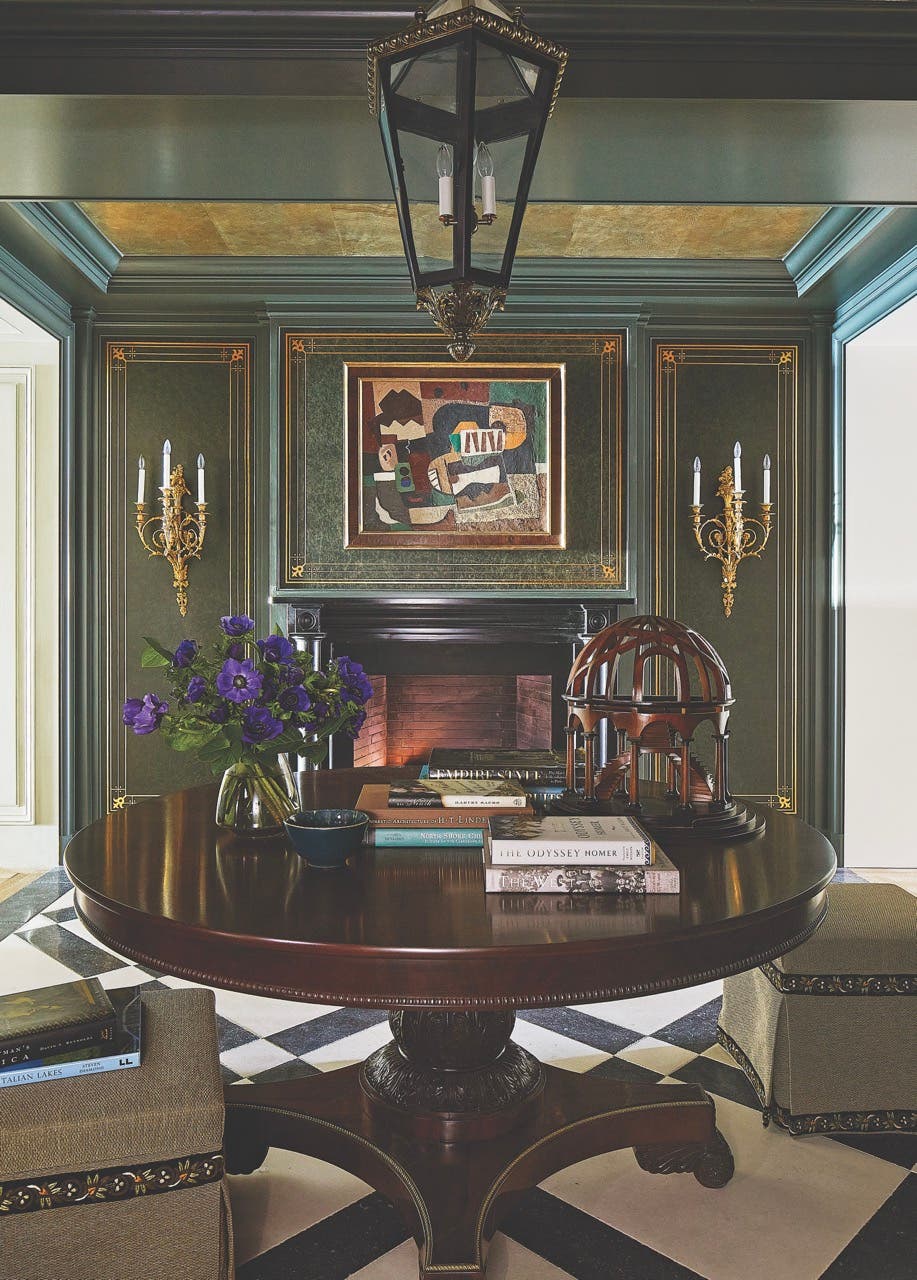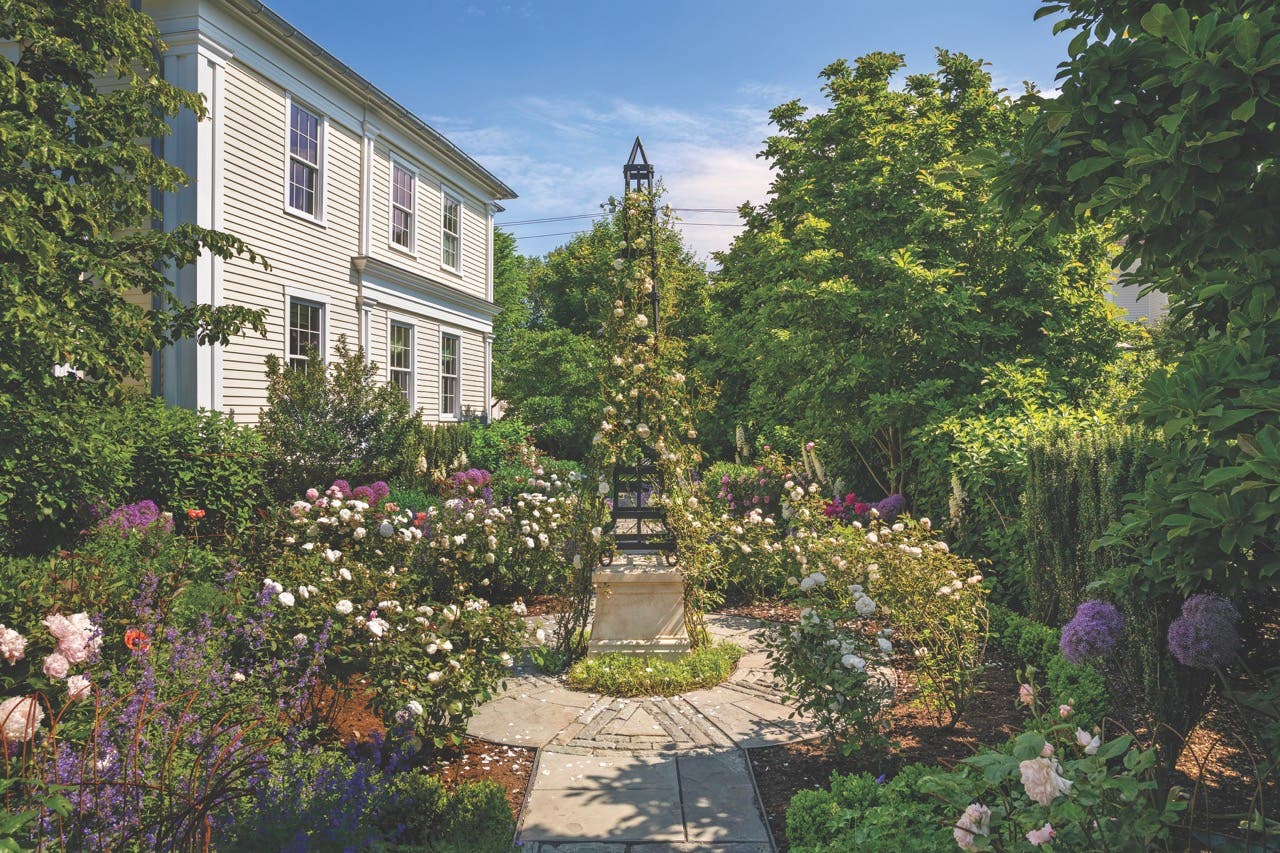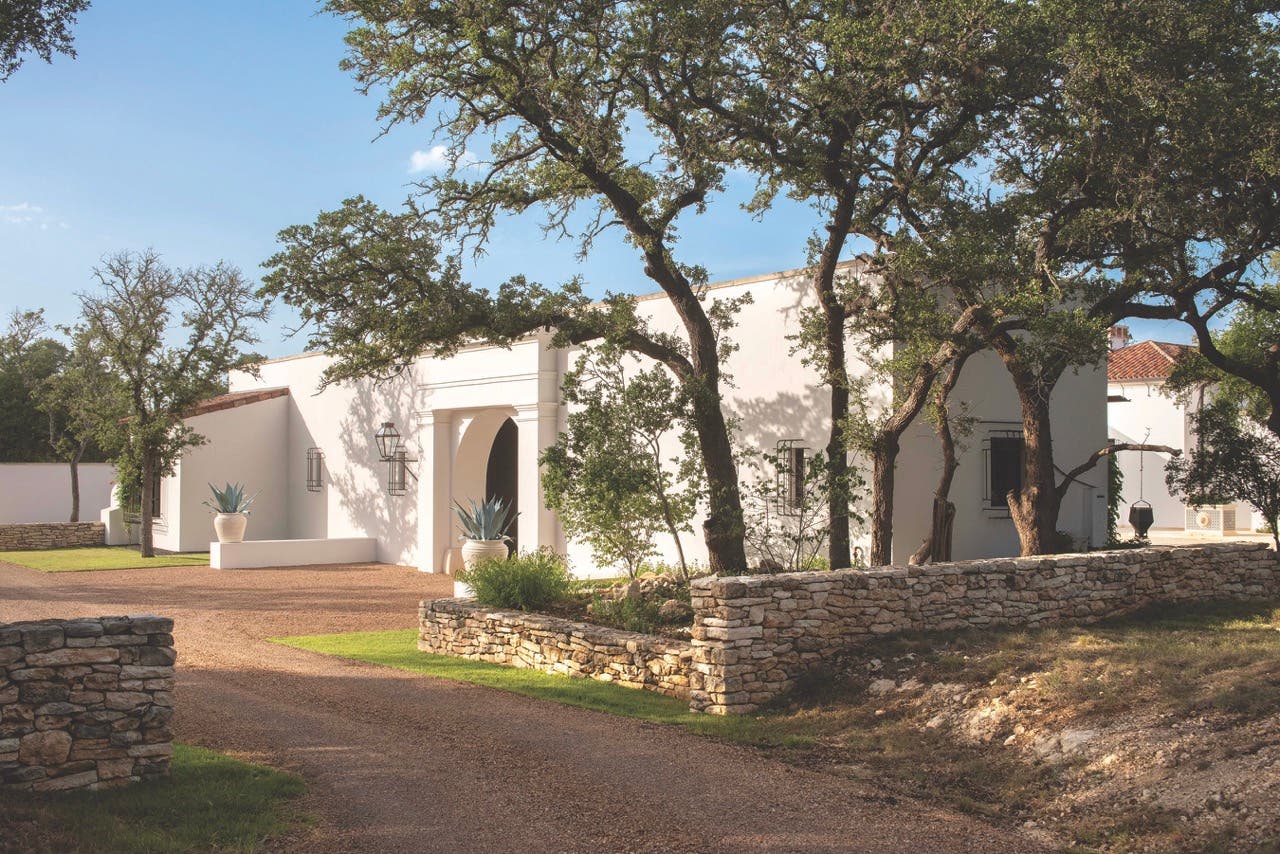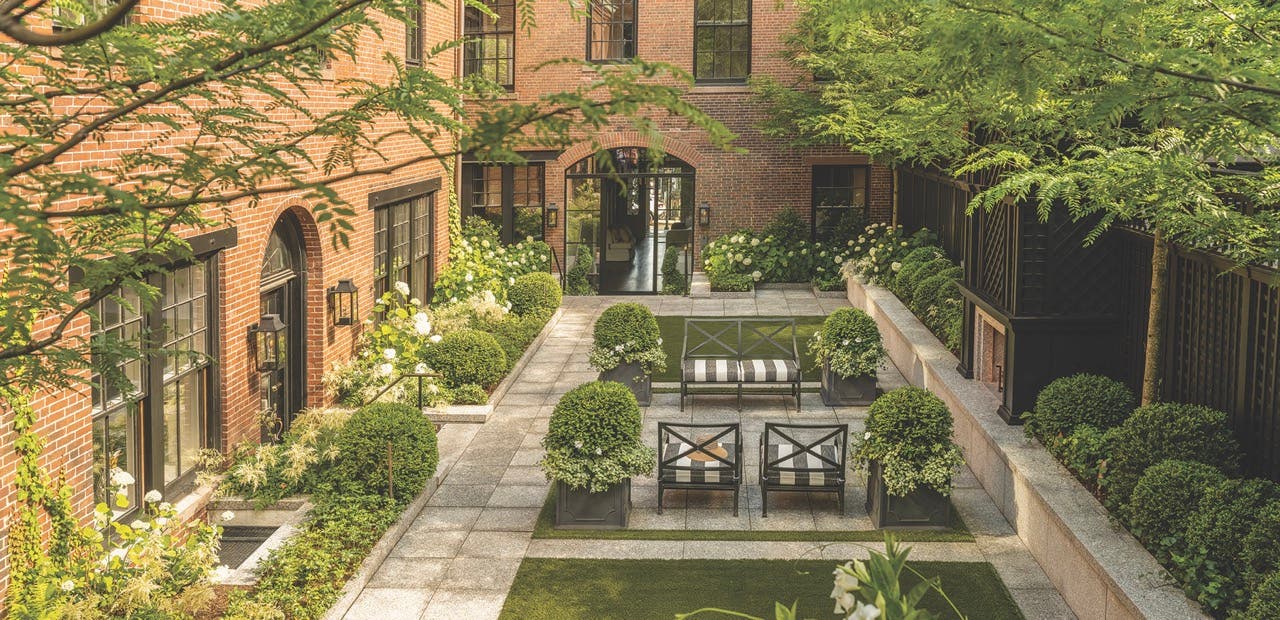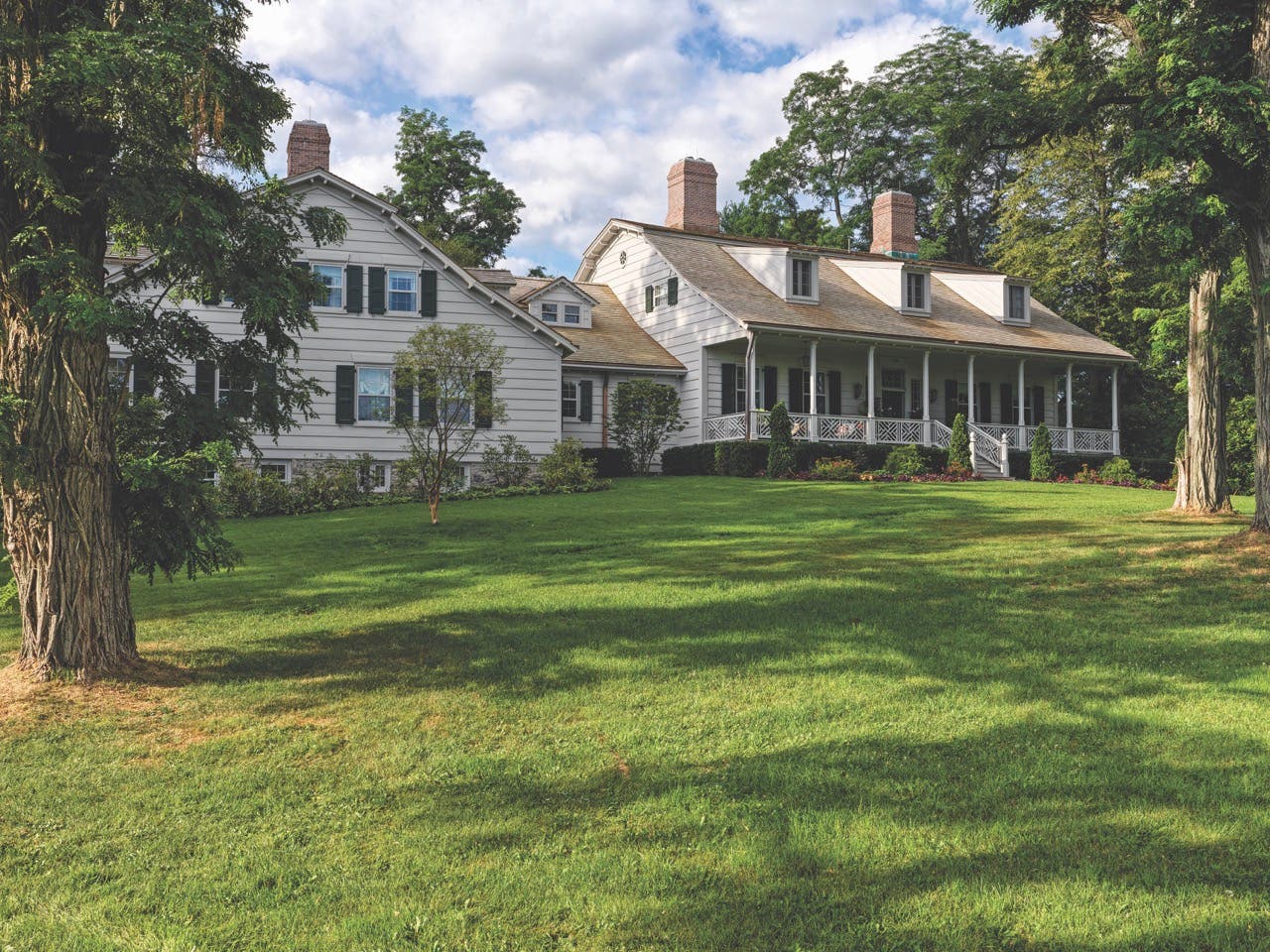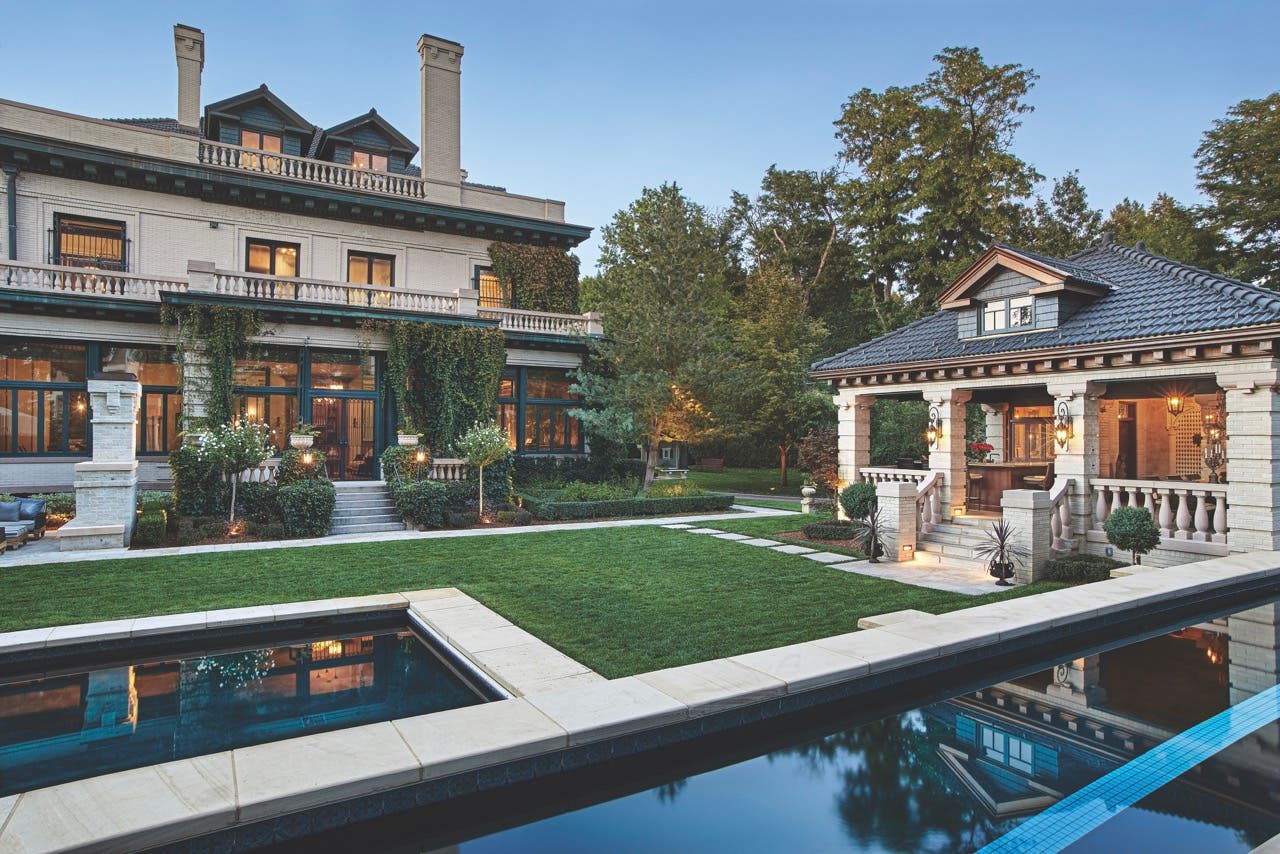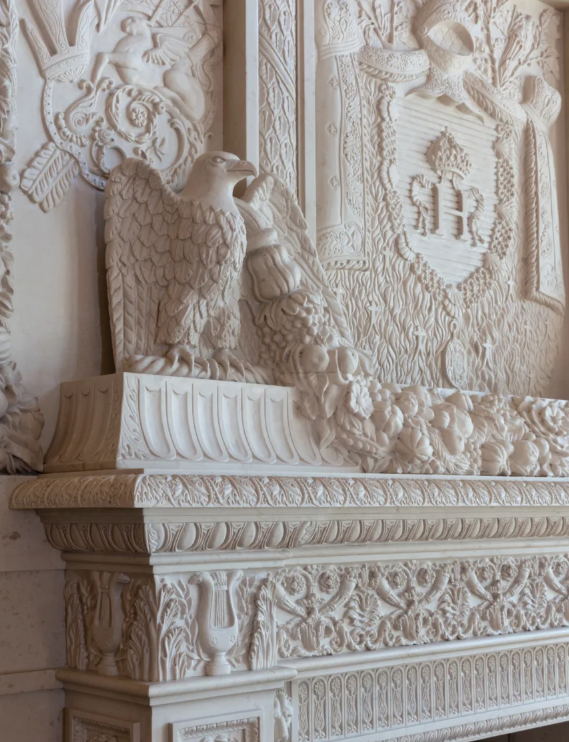
Palladio Awards
Harrison Design: Beaux-Arts Estate
Project: Beaux-Arts Estate
Companies: Harrison Design, ARTE 2000 and Traditional Cut Stone
From the 27-foot-tall limestone columns framing the front portico to the 28,000 square feet of artfully crafted bespoke living space, the Beaux-Arts-style mansion in Atlanta evokes the opulent grandeur of the storied estates of yesteryear.
The house, which reigns over 16 acres, has been a work in progress for two decades. The owners, a couple with six children, commissioned Harrison Design in Atlanta to create an estate of the same scale and celebrity as the cottages of Newport, William Morris Hunt’s Biltmore, and Peabody and Stearns’ Plum Orchard.
“Because of the scale and attention to detail and craftsmanship, it took five years to complete the main part of the house,” says William H. Harrison, AIA, founder of the firm that bears his name. “And we’re still working on it.”
Harrison and his team, which included Gregory L. Palmer, AIA, and Bulent Baydar, AIA, assembled a group of international artisans who did everything from stone carving and hand-forging ironwork to gilding, plastering, and stenciling.
The mansion, which is sculpted from Indiana limestone, announces itself with 10 monolithic columns that required three years to quarry and carve. They were made in Ontario, Canada by Traditional Cut Stone, which also did the estate’s other carved-limestone elements, including the column capitals, the door and window trims, and the cornices.
“Because of the limestone’s graining, there were tight specifications for the carving,” Palmer says. “They required structural testing before being shipped by flatbed and hoisted in place by crane.”
He added that the supplier, Indiana Limestone, had no lathe that could handle the columns’ 24 feet of solid stone, so it had to resuscitate a 1940s machine. “It was retired again when our project was finished,” Palmer says, “so these columns can never be replicated.”
The home’s semicircular entry vestibule, which is flanked by the library and dining room, features a dozen 11-foot-high columns made of Rouge Griotte marble ornamented by gold-leaf capitals and bases that were created by ARTE 2000 of Treviso, Italy.
“The marble, which is the color of a sour cherry, is rare and at one time was quarried only for royals,” says Stefano Facchini, owner of ARTE 2000. “It was impossible to find pieces that tall, so we selected blocks with colors and veins similar to each other and made two parts—one eight feet high and one three feet high—so there would not be an unaesthetic joint at eye height. We polished them by hand using antique abrasive tools.”
The columns set the stage for the grand salon, which features two identical facing fireplaces, each of them over 21 feet tall and in the First French Empire style.
"A group of international artisans did everything from stone carving and hand-forging ironwork to gilding, plastering, and stenciling."
Made of Var Beige marble, they took ARTE 2000 two months to design and five months to carve. “The client wanted a revisited and customized version of an ancient work exhibited at the Louvre in Paris,” Facchini says. “They were too heavy for the floor, so we made them look like they touched it by suspending them and anchoring them to the supporting wall.”
Palmer said the most significant challenge was finding craftspeople capable of executing classical designs in a traditional manner.
“The home reflects the combined talents of British plasterers, French ironmongers, North American and Romanian stone carvers, Italian marble suppliers, carvers, and fabricators, as well as woodworkers and material suppliers from across the United States,” he says.
Some of the pieces, such as the grand salon’s fireplaces, had to be disassembled and shipped from abroad. Much of the work, including the making of the cornices in the entry, stair hall, and grand salon, was done on site, a practice, Palmer says, “with which most contemporary plasterers are unfamiliar.”
The team used time-honored classical techniques whenever possible. The wine cellar, for example, features a true groin-vaulted ceiling that was formed and placed in a traditional manner.
“This house was built to last not 50, not 100 years, but to go far beyond that,” Harrison says.
Indeed, it could be another 50 years before the project is complete. In 2016, the team put the final touches on the billiards room and in 2017 finished the detailed stencil work on the barrel-vaulted ceiling in the terrace sitting room.
“Every couple of years, the client comes up with another project for us to do,” Palmer says.
Key Suppliers
CONTRACTOR Mark A. Palmer
LANDSCAPE ARCHITECT Joe A. Gayle & Associates
IRONWORK Jacques Brunet; Custom Artisan Group
WOODWORK Trimline Sales Co.
DECORATIVE PLASTER Ashworth Design; Decorators Supply Corp.



